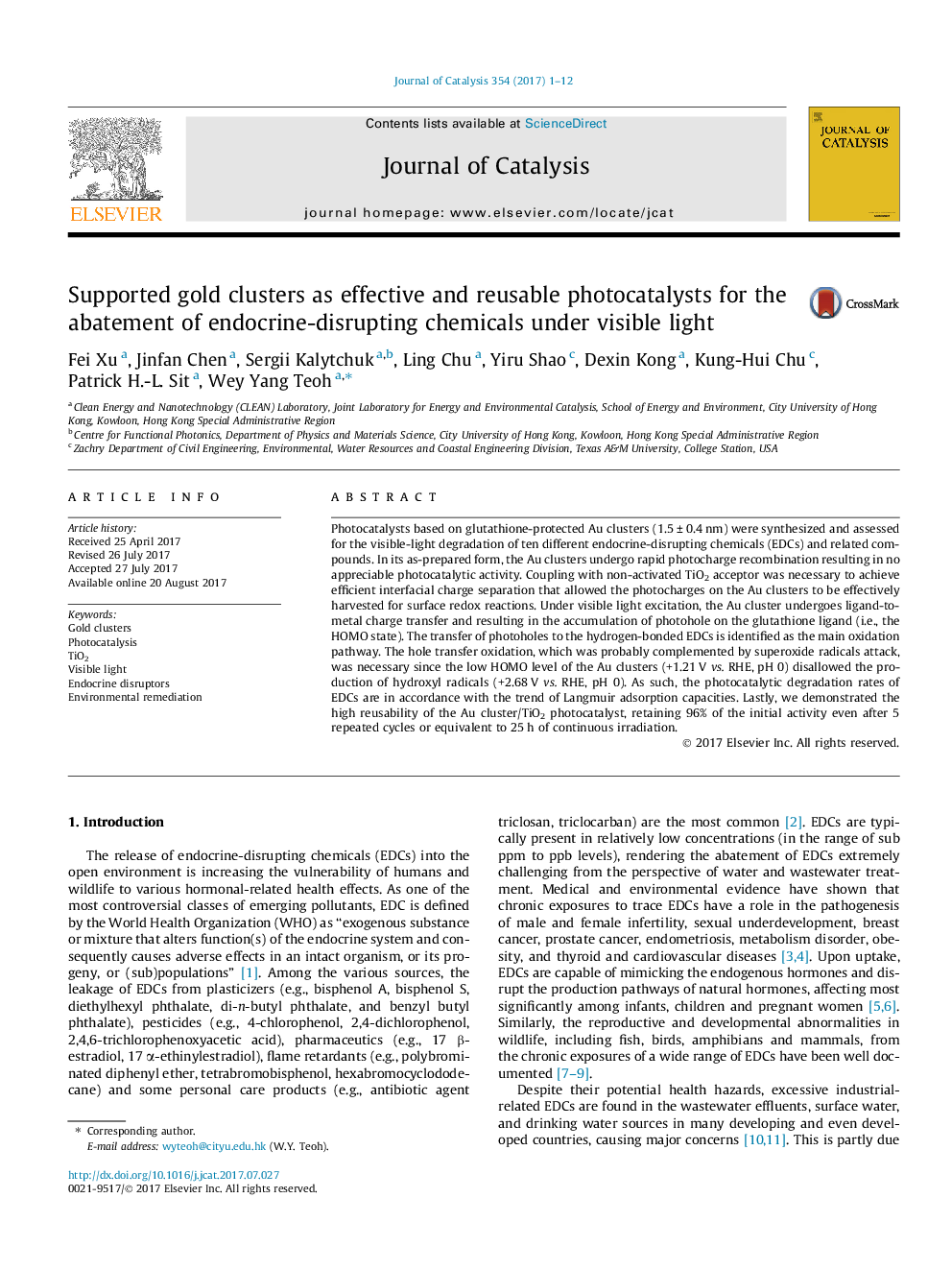| Article ID | Journal | Published Year | Pages | File Type |
|---|---|---|---|---|
| 6455489 | Journal of Catalysis | 2017 | 12 Pages |
â¢Supported Au clusters are shown to be efficient visible light photocatalysts.â¢Au clusters are efficient in targeting a range of endocrine disruptors.â¢Reaction relies on the surface hole transfer instead of hydroxyl radicals.â¢The Au clusters show extremely stable activity even after 25 h irradiation.
Photocatalysts based on glutathione-protected Au clusters (1.5 ± 0.4 nm) were synthesized and assessed for the visible-light degradation of ten different endocrine-disrupting chemicals (EDCs) and related compounds. In its as-prepared form, the Au clusters undergo rapid photocharge recombination resulting in no appreciable photocatalytic activity. Coupling with non-activated TiO2 acceptor was necessary to achieve efficient interfacial charge separation that allowed the photocharges on the Au clusters to be effectively harvested for surface redox reactions. Under visible light excitation, the Au cluster undergoes ligand-to-metal charge transfer and resulting in the accumulation of photohole on the glutathione ligand (i.e., the HOMO state). The transfer of photoholes to the hydrogen-bonded EDCs is identified as the main oxidation pathway. The hole transfer oxidation, which was probably complemented by superoxide radicals attack, was necessary since the low HOMO level of the Au clusters (+1.21 V vs. RHE, pH 0) disallowed the production of hydroxyl radicals (+2.68 V vs. RHE, pH 0). As such, the photocatalytic degradation rates of EDCs are in accordance with the trend of Langmuir adsorption capacities. Lastly, we demonstrated the high reusability of the Au cluster/TiO2 photocatalyst, retaining 96% of the initial activity even after 5 repeated cycles or equivalent to 25 h of continuous irradiation.
Graphical abstractDownload high-res image (97KB)Download full-size image
